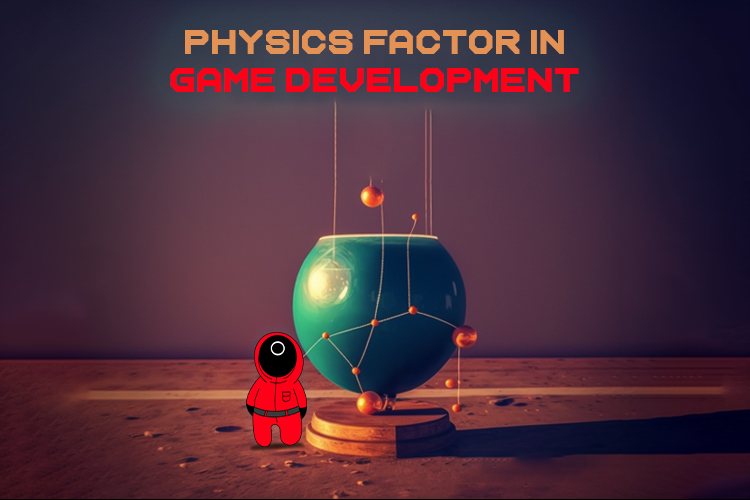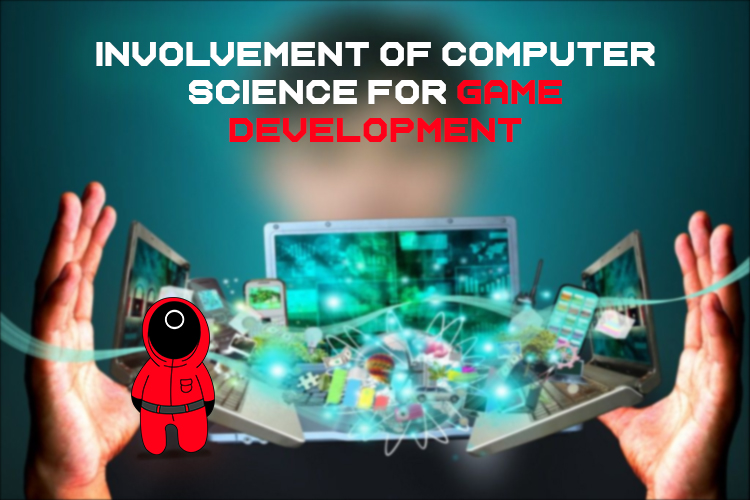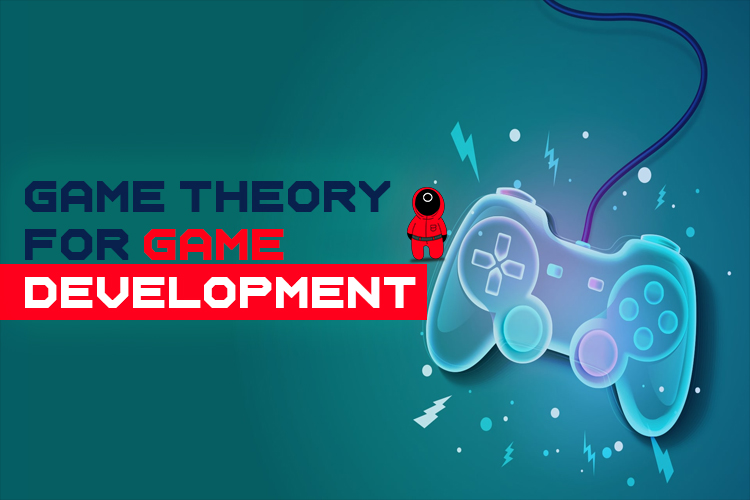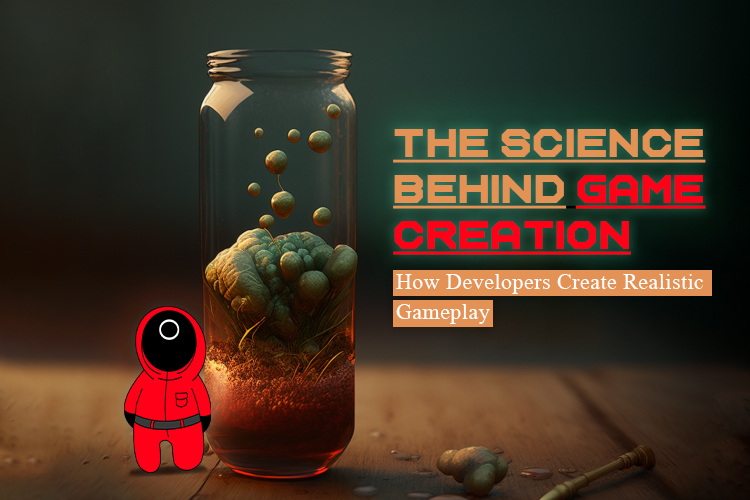The Science behind Game Development: How developers create realistic gameplay
Game development is a multiplex process that involves various disciplines, including programming, art, sound design, and game design. To create realistic gameplay, game developers use a combination of technologies, techniques, and principles from different fields of science. Here are some of the key areas of science that are relevant to game Development:
- Physics: Physics is essential for creating realistic movements and interactions between objects in a game world. Developers use physics engines and software libraries that simulate real-world physics to create accurate collisions, gravity, momentum, and other physical properties.
- Mathematics: Mathematics is critical for game development, especially for creating 3D graphics and mechanics. Developers use mathematical concepts such as geometry, trigonometry, and calculus to model and animate objects, simulate behaviors, and calculate trajectories.
- Computer Science: Computer science provides the foundation for game development, including programming languages, data structures, algorithms, and software engineering practices. Developers use computer science principles to build game engines, create game logic, and optimize performance.
- Psychology: Psychology is essential for creating immersive and engaging gameplay experiences. Developers use psychological principles such as motivation, attention, and learning to design game mechanics that are rewarding and challenging for players.
- Neuroscience: Neuroscience helps developers understand how players perceive, process, and respond to game stimuli. Developers use neuroscience research to design game interfaces, optimize player feedback, and create immersive game environments.
- Game Theory: Game theory is a bough of mathematics that studies decision-making in strategic situations. Developers use game theory to design competitive and cooperative game mechanics, balance gameplay, and create engaging player experiences.
Game development is a multidisciplinary field that draws on various areas of science to create realistic and engaging gameplay. By combining physics, mathematics, computer science, psychology, neuroscience, sociology, and game theory, developers can create fun and challenging games for players.
Physics Factor in Game Development:
Physics is essential in game development as it creates realistic and believable movements, interactions, and behaviors within a game world. Physics engines, which are software libraries that simulate real-world physics, are widely used by game developers to create accurate collisions, gravity, momentum, and other physical properties.

Here are some of the ways physics is used in game development:
- Movement and motion: Physics creates realistic movements for objects and characters in a game world. Developers use physics engines to simulate movements such as running, jumping, and falling, making them look more natural and believable.
- Collisions and interactions: Physics creates accurate collisions between objects in a game world, which affect their movements and behaviors. For example, when a player collides with an object in a game, physics engines can determine the force of the collision, the direction of impact, and the resulting movements.
- Environmental effects: Physics can create various environmental effects, such as wind, water, and fire, which can affect the behavior of objects and characters in a game world.
- Vehicle simulation: Physics can simulate the behavior of vehicles such as cars, planes, and boats. Developers can use physics engines to create realistic movements and interactions for these vehicles, such as realistic handling and collisions.
- Ragdoll physics: Ragdoll physics is a technique used to create realistic animations for characters when they are hit or fall. Using physics engines, developers can create realistic and believable movements for characters when they are hit, fall, or die.
Physics plays a crucial role in game development, as it is essential for creating a realistic and immersive game world that feels believable and engaging to the player.
Mathematics Factor in Game Development:
Mathematics is crucial in game development, as it provides the foundation for creating realistic graphics, game mechanics, and simulations. Here are some of the ways mathematics is used in game development:
- Geometry: Geometry is used extensively in game development for creating 2D and 3D graphics. Developers use mathematical concepts such as vectors, matrices, and coordinate systems to model and transform objects in a game world.
- Trigonometry: Trigonometry is used for calculating angles and distances in game development. It is beneficial for creating camera movements, calculating collision detection, and creating particle effects.
- Calculus: Calculus is used for creating smooth animations and simulations in games. Developers use calculus concepts such as derivatives and integrals to calculate the movement and acceleration of objects in a game world.
- Probability: Probability is used in game development for creating random events, such as item drops or enemy behavior. Developers use probability to determine the likelihood of certain events and create more unpredictable and exciting gameplay.
- Algebra: Algebra is used in game development for creating game mechanics and rules. Developers use algebraic equations to calculate game variables such as health, damage, and experience points.
- Game Theory: Game theory, a branch of mathematics that studies decision-making in strategic situations, creates balanced and engaging gameplay mechanics. Developers use game theory to design multiplayer games, balance game difficulty, and create engaging player experiences.
Mathematics is essential in game development, providing the tools and concepts to create realistic graphics, mechanics, and simulations. Using mathematical principles, developers can create fun and challenging games for players.
Involvement of Computer Science for Game Development:

Computer science plays a fundamental role in game development, providing the technical foundation for building game engines, creating game logic, and optimizing game performance. Here are some of the ways computer science is involved in game development:
- Programming languages: Game development relies heavily on programming languages like C++, Java, and Python. Developers use these languages to write code for game engines, logic, and other game systems.
- Algorithms: Game development requires algorithms for various tasks, such as pathfinding, collision detection, and artificial intelligence. Developers use efficient algorithms to ensure that games run smoothly and that gameplay is challenging and engaging.
- Data structures: Game development requires data structures to organize and manage game data, such as player stats, inventory, and game states. Developers use data structures such as arrays, linked lists, and trees to store and retrieve game data efficiently.
- Graphics programming: Graphics programming is a critical aspect of game development, as it involves creating realistic and engaging visuals for games. Developers use graphics programming languages such as OpenGL and DirectX to create 2D and 3D graphics and to optimize game performance.
- Game engines: Game engines are software frameworks that provide a foundation for building games. They include components such as physics engines, graphics engines, and scripting languages. Developers use game engines such as Unity, Unreal Engine, and CryEngine to speed up the development process and focus on creating game content rather than building underlying systems.
- Software engineering practices: Game development involves applying software engineering practices such as version control, testing and debugging. Developers use these practices to ensure that games are bug-free, stable, and performant.
Computer science is critical in game development as it provides the tools and principles to build high-quality, engaging games. By using computer science principles, developers can create games that are fun, challenging, and optimized for performance.
Psychology in game development:
Psychology plays a significant role in game development, providing insight into human behavior and motivation, which can be used to create more engaging and enjoyable games. Here are some of the ways psychology is involved in game development:
- Player motivation: Psychology is used to understand player motivation and to design games that meet player needs and desires. Game developers use motivation theories such as Self-Determination Theory and Flow Theory to create engaging and rewarding gameplay experiences. Player Engagement: Psychology is used to understand what makes players engaged with a game and to create games that keep players engaged. Developers use principles such as operant conditioning, reward schedules, and feedback loops to create addictive and rewarding gameplay.
- Player Emotions: Psychology is used to understand how players experience emotions while playing games and to create games that evoke strong emotional responses. Developers use emotional design principles such as color theory, sound design, and storytelling to create emotionally engaging games.
- User interface design: Psychology is used to design user interfaces that are spontaneous and easy to use. Developers use principles such as cognitive load theory, perceptual psychology, and user experience design to create interfaces that are easy to navigate and visually appealing.
- Social interactions: Psychology is used to understand how players interact with each other in multiplayer games and to design games that foster positive social interactions. Developers use social psychology principles such as social identity theory and group dynamics to create multiplayer games that promote teamwork and positive social experiences.
- Accessibility: Psychology is used to create games accessible to players with different abilities and preferences. Developers use universal design, human factors, and user-centered design principles to create games that are easy to learn and enjoyable for all players.
Psychology is essential in game development, providing insight into player motivation, emotions, and behavior. Using psychological principles, game developers can create more engaging and enjoyable games that meet player needs and desires.
Role of NeuroSciences in Game Development:
Neuroscience is a rapidly growing field that studies the brain and nervous system, and it can be used in game development to create more engaging, immersive, and enjoyable games. Here are some of the ways neuroscience is involved in game development:
- Understanding player behavior: Neuroscience is used to understand how players behave when playing games, such as how they process information, learn new skills and respond to stimuli. By studying these behaviors, game developers can create more engaging and challenging gameplay experiences tailored to the player’s cognitive abilities.
- Enhancing immersion: Neuroscience can be used to create more immersive game experiences. By studying how the brain processes sensory information, developers can create more realistic and detailed game environments that stimulate the player’s senses.
- Improving memory: Neuroscience can enhance a player’s memory and learning while playing games. Developers can design games that help players learn new skills and remember important information by understanding how the brain forms and stores memories.
- Reducing stress: Neuroscience can be used to create games that reduce player stress levels. Developers can design games that promote relaxation and reduce anxiety by understanding how the brain responds to stress.
- Incorporating biofeedback: Neuroscience can be used to incorporate biofeedback into games. Biofeedback is a technique that measures physiological responses such as heart rate and brain activity. It can be used to create games that adapt to the player’s emotional and cognitive state.
- Creating virtual reality: Neuroscience can be used to create more realistic virtual reality experiences. By understanding how the brain processes visual and auditory information, developers can create virtual environments that feel more immersive and realistic.
Overall, neuroscience is an exciting field that can potentially transform game development. By incorporating neuroscience principles into game design, developers can create more engaging and immersive games tailored to the player’s cognitive and emotional abilities.
Game Theory for Game Development:
Game theory is a bough of mathematics that studies decision-making in strategic situations. It has several applications in game development, including:

- Game mechanics: Game theory can be used to design game mechanics that are balanced and fair. By modeling different strategies and outcomes, developers can create game mechanics that encourage strategic thinking and reward skillful play.
- Multiplayer balancing: Game theory can be used to balance multiplayer games by ensuring that all players have an equal chance of winning. Developers can create challenging and rewarding games for all players by analyzing different strategies and outcomes.
- Economics: Game theory can be used to model in-game economies and create virtual marketplaces. By studying supply and demand, developers can create self-regulating economies and encourage players to engage in strategic decision-making.
- Negotiation systems: Game theory can be used to design negotiation systems that are fair and balanced. By modeling different negotiation strategies and outcomes, developers can create systems encouraging players to cooperate and compete equally.
- Artificial intelligence: Game theory can create artificial intelligence systems that learn and adapt to player behavior. By modeling different strategies and outcomes, developers can create AI systems that are challenging and responsive to player actions.
In summary, game theory is an essential tool for game development, as it provides a framework for understanding strategic decision-making in games. By incorporating game theory principles into game design, developers can create more engaging and challenging games that encourage strategic thinking and reward skillful play.

